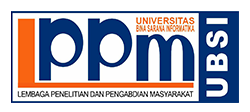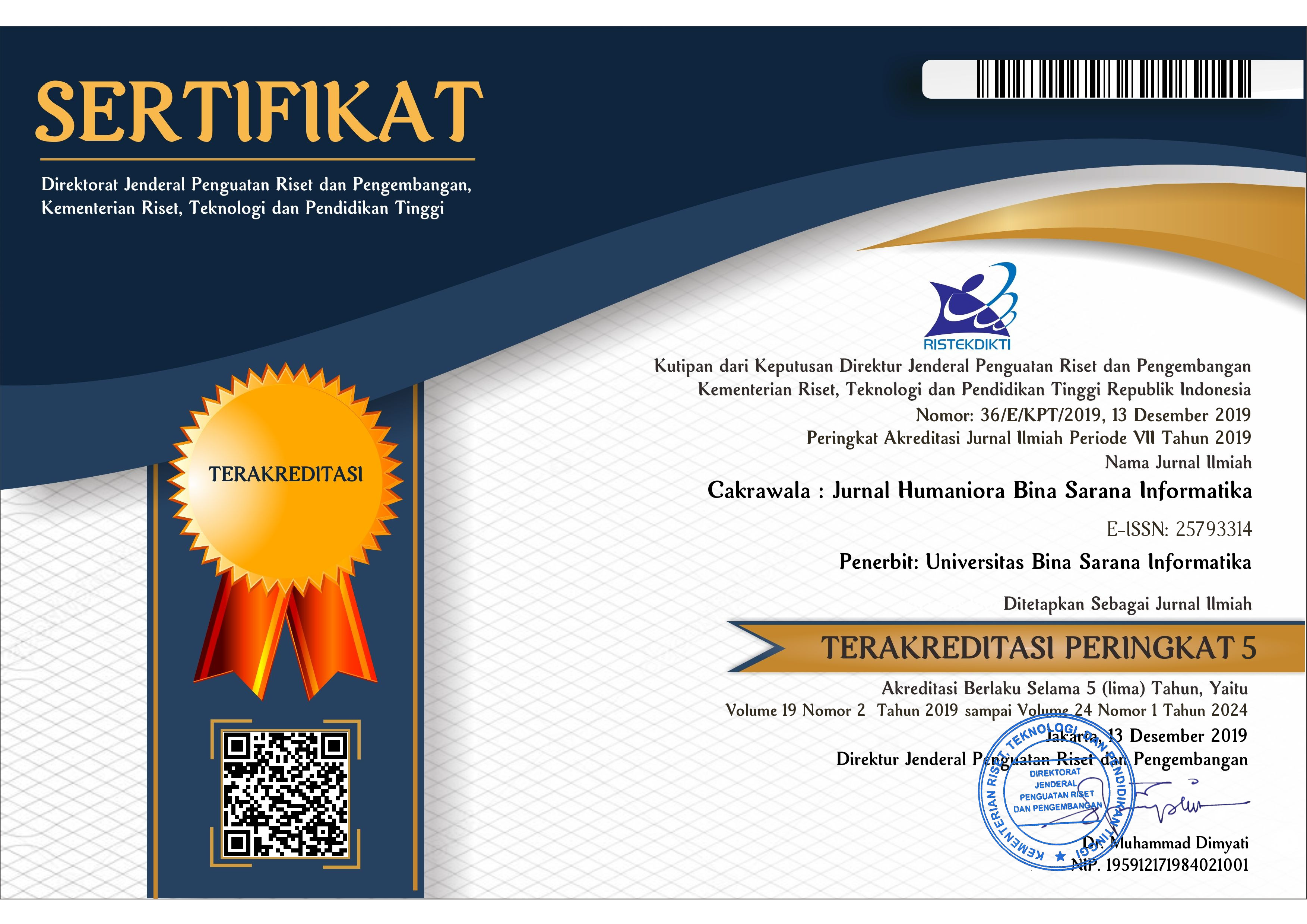STRATEGI HRM DALAM MENCIPTAKAN KOMITMEN DAN RETENSI MENUJU GOING CONCERN PERUSAHAAN
Abstract
Full Text:
PDFReferences
Azeez, S. A. (2017). Human Resource Management Practices and Employee Retention : A Review of Literature, 18(2), 1–10. https://doi.org/10.9734/JEMT/2017/32997
Baron, A., & Armstrong, M. (2007). Human Capital Management Achieving Added Value Through People. Great Britain And The United State. Retrieved From Www.Kogan-Page.Co.Uk
Damayanti, A. P., Susilaningsih, & Sumaryati, S. (2013). Pengaruh Kompensasi dan Motivasi Kerja Terhadap Kinerja Karyawan Perusahaan Daerah Air Minum (PDAM) Surakarta. Jupe UNS, 2, 155–168.
Erasmus, B., Naidoo, L., & Joubert, P. (2017). Talent Management Implementation at an Open Distance E-Learning Higher Educational Institution: The Views of Senior Line Managers. The International Review of Research in Open and Distributed Learning, 18(3). https://doi.org/10.19173/irrodl.v18i3.2957
Federman, B. (2009). Employee Engagement A Roadmap for Creating Profi ts, Optimizing Performance, and Increasing Loyalty. United States of America: Jossey-BassA Wiley Imprint 989 Market Street, San Francisco, CA 94103-1741.
Meyer, J. ., Stanley, Herscovitch, L., & Topolnytsky, L. (2002). Affective, continuance and normative commitment to the organization: A meta- 54 analysis of antecedents, correlates and consequences. Journal of Vocational Behavior, 61, 20–52.
Pawito. 2007. Penelitian Komunikasi Kualitatif. Yogyakarta: LKiS Pelangi. Aksara
Rina Mulyani. (2012). Pengaruh Komitmen Organisasi Dan Ketidakpastianlingkungan Terhadap Hubungan Antara Partisipasianggaran Dengan Senjangan Anggaran(Studi Empiris Pada Perusahaan Perbankan Bumn Di Pekanbaru). Retrieved From Http://Repository.Uin-Suska.Ac.Id/10170/
Sattigeri, R. C. (2016). Employee Retention and Commitment, 4(4), 77–81.
Sugiyono. (2008). Metode Penelitian Kunatitatif Kualitatif dan R & D. Bandung: Alfabeta.
Sugiyono. (2013). Metode Penelitian Kuantitatif Kualitatif dan R & D. Bandung: CV.Alfabeta.
Wanjiru, N. S. (2007). A survey of factors that influence employee retention in manufacturing firms in Nairobi, (October).
DOI: https://doi.org/10.31294/jc.v20i2.8973
ISSN: 2579-3314


Dipublikasikan oleh LPPM Universitas Bina Sarana Informatika
Jl. Kramat Raya No.98, Kwitang, Kec. Senen, Kota Jakarta Pusat, DKI Jakarta 10450

This work is licensed under a Creative Commons Attribution-ShareAlike 4.0 International License









